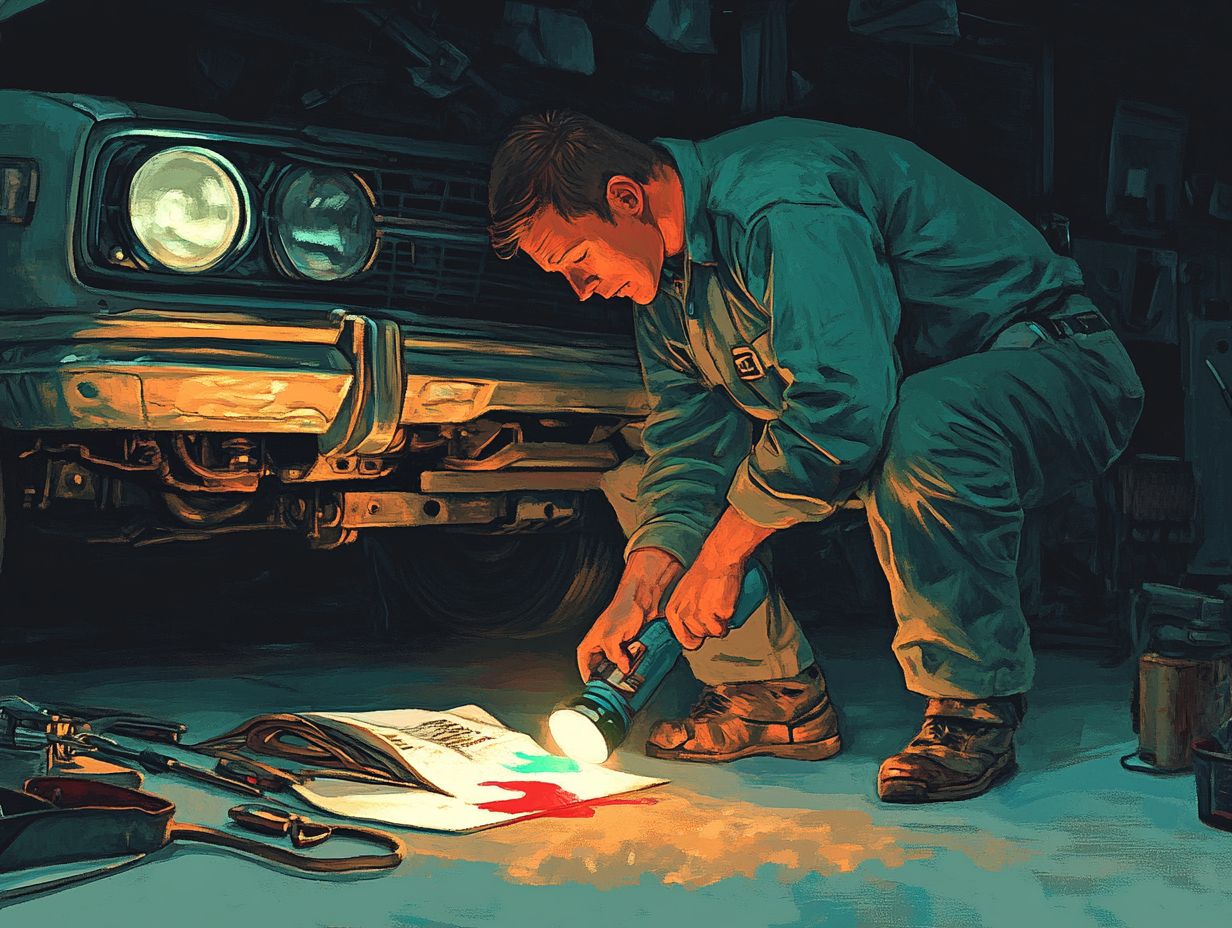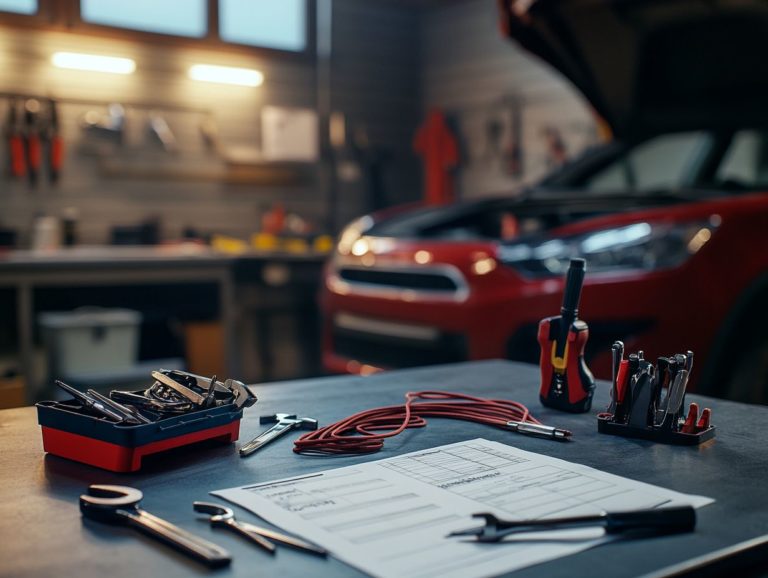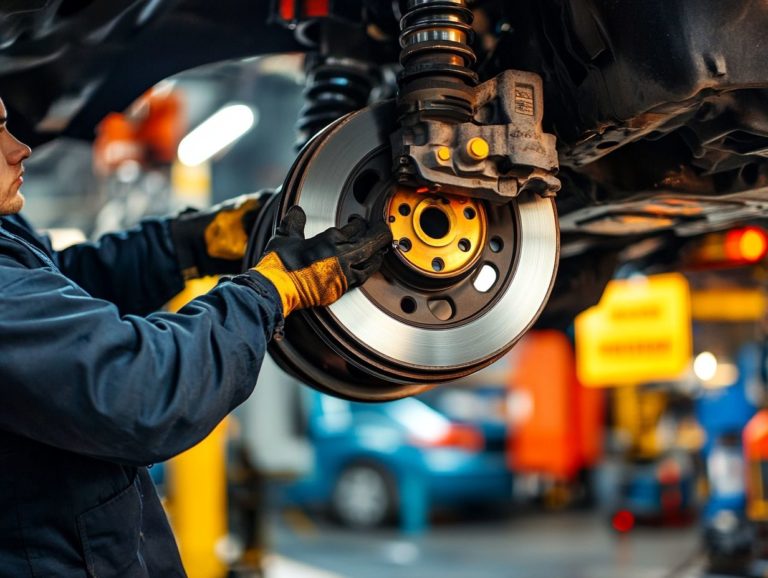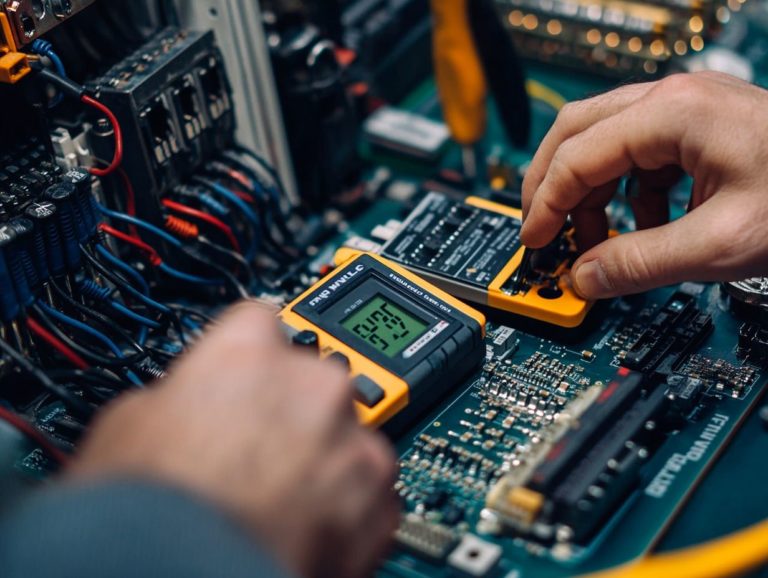How to Assess Common Fluid Leaks
Fluid leaks can be both frustrating and financially burdensome, whether they occur in your home, vehicle, or workplace. Recognizing the signs and symptoms is essential for taking prompt action.
This article delves into the various types of fluid leaks, guiding you to identify common indicators and understand their underlying causes. It also covers effective diagnostic techniques and repair methods, along with preventive measures to keep those pesky leaks at bay.
Arm yourself with the knowledge to address these issues before they escalate into larger problems.
Contents
Key Takeaways:

- Act now! Check for signs of fluid leaks today to avoid costly repairs!
- Understand the potential causes of fluid leaks, like worn seals or damaged hoses, to choose the best repair method.
- Use diagnostic techniques, such as a pressure test, to identify the source and severity of a fluid leak for proper repair.
Understanding the Types of Fluid Leaks
Knowing the different types of fluid leaks is essential for ensuring the seamless operation of any fluid system. Fluid leaks can appear in various forms, including hydraulic fluids like engine oil, transmission fluid, brake fluid, and power steering fluid.
Each of these poses distinct challenges; for instance, a gasoline leak or an antifreeze leak can lead to equipment damage and create hazardous work conditions. By recognizing the signs and symptoms of these leaks, you can boost your leak detection efforts and improve maintenance strategies.
This approach helps you prevent costly repairs and hefty fines.
Signs and Symptoms of Fluid Leaks
You can often spot signs of fluid leaks in automotive systems by watching for visual cues and any unusual changes in fluid consistency, color, or odor. Recognizing these indicators early is crucial to prevent further damage.
If you notice bright red transmission fluid, it s a clear sign that a leak requires immediate attention. The smell of gasoline should raise red flags, as it may indicate a potentially hazardous situation.
Identifying Common Indicators
Identifying common indicators of fluid leaks is crucial for timely intervention. A quick visual inspection might reveal dampness or discoloration around components. Additionally, bubble testing, which involves looking for bubbles forming around a leak when you apply soapy water, can help you pinpoint exactly where leaks are hiding.
Changes in pressure can also signal underlying issues. Prompt leak identification is essential to prevent equipment damage and maintain operational efficiency.
In addition to these methods, keeping an ear out for unusual noises or vibrations can alert you to potential leaks, as these often correlate with inconsistent fluid flow. Implementing regular pressure change analysis allows you to establish baseline readings, making it easier to spot deviations.
Early detection of fluid leaks not only helps you avoid costly repairs and production downtimes, but also significantly extends the lifespan of your equipment. By staying proactive, you can optimize maintenance schedules, ensuring that your systems run smoothly while protecting your investments from unforeseen failures.
Causes of Fluid Leaks
Knowing what causes fluid leaks can save you time and money! Common culprits vary from wear and tear of seals and gaskets in hydraulic systems to improper installation and handling of the piping systems that transport chemical fluids.

By identifying these causes, you not only prevent future leaks but also unlock vital maintenance opportunities that can save you costs and enhance your production output.
Possible Reasons for Leaks
Possible reasons for fluid leaks can stem from equipment damage, material wear, and environmental factors. These all contribute to dangerous and costly leaks. Knowing these causes helps you tackle leaks early and effectively!
Leaks often arise from aging machinery that hasn t received regular maintenance. This can lead to wear and tear that worsens material fatigue. Fluctuating temperatures or unexpected weather events can add stress to your equipment, leading to performance failures. It s crucial for your organization to prioritize robust training programs that educate employees on recognizing early signs of potential leaks and employing effective prevention methods.
Such initiatives not only bolster workplace safety but also pave the way for significant cost savings by reducing incidents of improperly managed fluid leaks. Ultimately, this approach reinforces a culture of proactive risk management within your organization.
Assessing and Diagnosing Fluid Leaks
Assessing and diagnosing fluid leaks is essential for preserving the integrity and efficiency of any fluid system. Act quickly to find and fix leaks! By using advanced leak detection methods like visual testing and pressure testing, you can accurately pinpoint the source of leaks and implement the necessary corrective actions.
This proactive strategy minimizes production downtime and fosters a safer work environment by addressing potential hazards that leaks may pose.
Diagnostic Techniques and Tests
Diagnostic techniques and tests are crucial for accurately identifying fluid leaks and understanding their impact on operational integrity. Methods such as:
- Pressure Change Analysis: Monitoring fluctuations in system pressure to spot discrepancies that signal a leak’s presence.
- Airborne Ultrasonic Testing: Utilizing sound waves to detect high-frequency sounds emitted by leaks, ideal for noisy industrial settings.
- Mass Spectrometry: Using unique molecular signatures of substances to pinpoint leaks accurately.
The integration of advanced technologies like infrared thermography and fiber optic sensors significantly enhances these diagnostic techniques. This enables real-time monitoring and more precise assessments of potential leak risks.
Repairing and Preventing Fluid Leaks

Repairing and preventing fluid leaks is vital for maintaining the longevity and operational efficiency of any fluid system. By adopting effective leak repair strategies and proactively implementing leak prevention measures, you can mitigate the risk of costly leaks and equipment damage.
Establish comprehensive fluid maintenance programs. Regular employee training will enhance your leak management efforts and create a safer work environment.
Take the first step towards safeguarding your operations today. Implement these strategies now!
Effective Repair Methods
Repairing fluid leaks depends on their type and location. Whether it s a hydraulic or chemical issue, using the right solutions is crucial.
For minor leaks, you might use sealants. Severe problems may require complete component replacements.
Understanding the leak’s nature is key. A small hydraulic leak can often be fixed with specialized epoxy.
However, high-pressure leaks need extensive repairs. Ensure your team knows how to identify these differences. Comprehensive training programs equip your staff with the skills necessary to choose the right approach based on leak severity.
Such programs enhance repair effectiveness and build a strong safety culture. This ensures all employees feel confident in addressing fluid leaks promptly and efficiently.
Preventive Measures and Tips
Implementing preventive measures is crucial for minimizing the risk of fluid leaks and ensuring a safe operational environment.
By setting up regular fluid maintenance routines, conducting thorough inspections, and providing training for employees to recognize leak symptoms, you can significantly enhance your preventative efforts.
Establishing protocols for immediate reporting and addressing detected leaks cultivates a culture where safety takes precedence.
Regularly updating maintenance schedules to align with your equipment’s operational requirements and the types of fluids used is essential.
Incorporating visual aids and reminder systems can empower your employees to remain vigilant. Ultimately, fostering an environment that encourages education and proactive communication about leak management not only safeguards valuable resources but also boosts overall efficiency and morale among your staff.
Frequently Asked Questions
What are the common types of fluid leaks in a vehicle?

- Engine oil leaks
- Coolant leaks
- Transmission fluid leaks
- Power steering fluid leaks
- Brake fluid leaks
- Differential fluid leaks
How can I identify an engine oil leak?
You can identify an engine oil leak by checking for dark or amber-colored fluid under your vehicle, a burning oil smell, low oil levels, or an oil warning light on your dashboard.
What are the signs of a coolant leak?
Signs of a coolant leak include a sweet smell coming from your engine, low coolant levels, white smoke from the exhaust, or an overheating engine.
How do I know if I have a transmission fluid leak?
You may have a transmission fluid leak if you notice red or brown fluid under your vehicle, difficulty shifting gears, or a burning smell from your transmission.
Can I drive my car with a power steering fluid leak?
You should not drive your car with a power steering fluid leak as it can cause difficulty steering, potential damage to the power steering system, and put your safety at risk.
What should I do if I suspect a brake fluid leak?
If you suspect a brake fluid leak, act quickly. Do not drive your vehicle; have it towed to a mechanic. Brake fluid leaks can lead to brake failure and should be addressed immediately.






